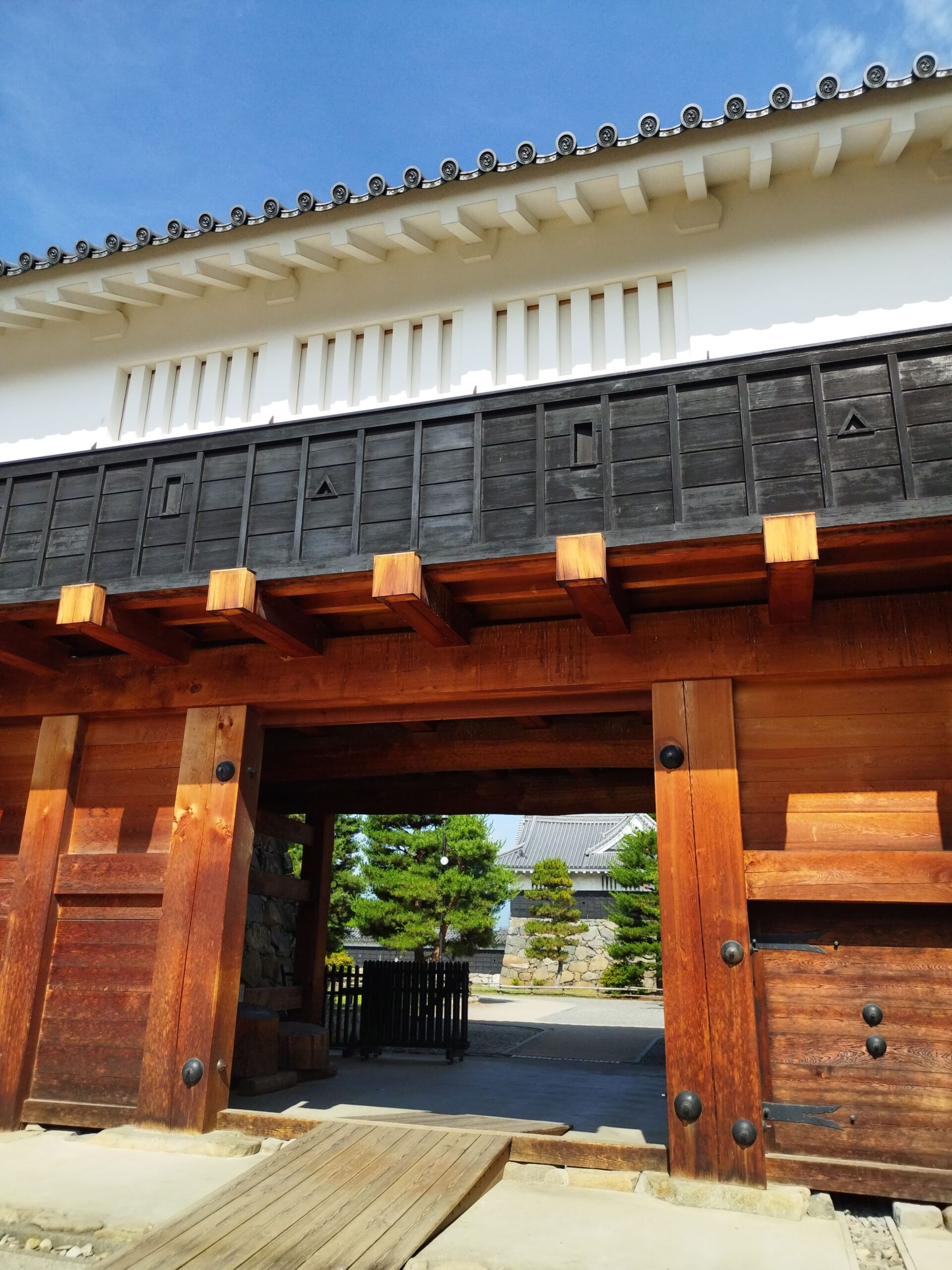本ブログは観光業、企業接待、留学生対応等で英語案内が必要ながら、多忙で準備に時間をかけられない方々の為にすぐに使える情報を分かりやすく解説しています。
今回は『日本の城』わかりやすく解説ブログの《4.城門》の《4.2 インバウンドの視点:Q&A」パートのA級者用(日→英の対応が必要な方)演習ツール《Cツール》(=QA即答演習用)及び《Dツール》(日→英演習用:Q質問文&A回答文)です。
👉ショートカット&リンクについて!①最初に音声で《Cツール》(=QA即答演習用)学習されたい方はそのままお進みください。《Dツール》(日→英演習用)を学習されたい方は(Q質問文&A回答文)から。➁最初に原文を確認されたい方は【原文:日英】へ③本編ブログを参照されたい方は『日本の城』わかりやすく解説へ。④音声ツールの概要を参照されたい方は『演習ツール』まで!
4. 城門
4.2 インバウンドの視点&QA
本編ブログ通り《城門》でインバウンドが素朴に感じるであろう想定QAの(英質問>英回答)即答演習です。音声は本編通り、質問10文は前半(1-5)英国女性話者、後半(6-10)インド女性話者、回答は前半(1-5)英国女性話者、後半(6-10)インド男性話者の2ファイル構成です。
Cツール:”英語”での質問と回答のやり取り
C1:基本モデル(音声:英質問>英回答)
👉”英語”質問と”英語”回答の全文チェック用です。
C2:口頭即答モデル(音声:英質問>ポーズ)
👉”英語”質問の後の無音(ポーズ)の間に”英語”即答が試せます。(C1の”英語”の回答がないタイプです。)C1の回答にこだわらず、スピード重視で(自分の表現で)ポイントのみ伝える練習もできます。
C3:口頭即答モデル(音声:英回答のみ)通常速度版
👉”英語”回答文のスピード感のチェックができます。
C4:口頭即答モデル(音声:英回答のみ)85%低速版
👉”英語”回答文の内容確認ができます。
Dツール❶:”日⇒英”演習簡易ツール :Q質問10文
D1:日英確認用:『日本語』”英語”対訳
👉文単位で日本語の後に英訳が續きますので、内容の確認ができます。
D2:口頭即訳用:『日本語』のみ(ポーズ間に英訳)
👉各日本語文の後はポーズになっていますので、その間に英訳できます。
D3:リピーティング用:”英語”のみ(ポーズ無し)
👉英語音声のみが(ポーズなく)続きますので復唱ができます。
D4:内容チェック用:”英語”のみ(低速版:or同通演習用)
👉英語音声(ポーズなし)を低速版で復唱or同時通訳の演習ができます。速さはいつも通り、約120wpm(約85%低速版)です。
Dツール❷:”日⇒英”演習簡易ツール :A回答10文
この項は、4.2のインバウンドの視点(疑問)に対する10回答です。👉本編ブログ通り、回答は前半(1-5)と後半(6-10)の2ファイルに分かれています。
D1:日英確認用:『日本語』”英語”対訳
👉文単位で日本語の後に英訳が續きますので、内容の確認ができます。
D2:口頭即訳用:『日本語』のみ(ポーズ間に英訳)
👉各日本語文の後はポーズになっていますので、その間に英訳できます。
D3:リピーティング用:”英語”のみ(ポーズ無し)
👉英語音声のみが(ポーズなく)続きますので復唱ができます。
D4:内容チェック用:”英語”のみ(低速版:or同通演習用)
👉英語音声(ポーズなし)を低速版で復唱or同時通訳の演習ができます。速さはいつも通り、約120wpm(約85%低速版)です。
【原文:日英】
Q: 想定質問
《日本語》
- 日本の城門の見処、特徴は何ですか?
- 他の古い建造物(寺院、屋敷)の門と何処が違うのですか?
- この様な城門はいつ頃できたのですか?
- (木造建築自体が珍しいので)木造で大丈夫なのですか?
- 城門は何の木材を使っているのですか?
- 全国にある城の城門は同じ構成ですか?
- 城門の正門にはどんな意味があるのですか?
- どうしてそれぞれの城門に違った名前がついているのですか?
- 城門は通常は空いているのですか?
- 城門ではどのような防御策が施されていましたか?
《英語》
- What are the features and characteristics of Japanese castle gates?
- How do they differ from the gates of other ancient structures like temples and mansions?
- When did this type of castle gate first pop up?
- Are they sturdy enough, being made of wood?
- What type of wood is used for castle gates?
- Are castle gates the same in every castle across Japan?
- What was the significance of the main gate of a castle?
- Why do different castle gates have different names?
- Were castle gates usually open?
- What kind of defensive measures were implemented at castle gates?
Glossary:質問
日英とも長さに合わせて1.5~2秒ポーズです。
features and characteristics(特徴) differ from (異なる)ancient structures(古代建造物)a type of castle gate(城門の型) pop up(出現する) sturdy enough(頑丈)being made of wood(木製で)What type of wood (どんな木?)
A:回答例
《日本語》
- 城門は時代の推移と戦争技術の進歩により多様に進化しました。
- 防御力と攻撃力と装飾性を兼ね備えた城独自の桝形門が定着しました。
- 初期数世紀に見られた木製柵から発展し、16 世紀にこの様に最もよく知られた形になりました。
- 門扉には鋲で鉄板を止めて強化し、戦時は内側から岩や材木で塞いで敵の侵入を防ぎました。
- 門柱、梁、櫓の壁や床などに強度のある檜、ケヤキ、杉、松などを使っています。
- 基本構成は同じですが、大きさや配置の仕方が異なったり、唐門、唐破風などで装飾性を加えた門もあります。
- 通常住宅と考え方は変わらず、正門は領主の出入り口で、それ以外の者たちは裏門を使いました。
- それぞれの門を作った経緯や縁起の良い名前を付けて防衛力や権威を高めようとしました。
- 平時でも通常は閉まっていて、日常の出入りは脇の小さな出入口を使っていました。
- 門の上に設けられた櫓からは、石を落としたり、鉄砲や弓で攻撃したりすることができました。
《英語》
- Castle gates have changed a lot over time because of advancements in warfare technology.
- They ended up having this cool rectangular gate that combined defense, offense, and good looks all in one awesome structure.
- They evolved from the wooden stockades of earlier centuries and came into their best-known form in the 16th century
- The gate doors were reinforced with iron plates and during war, sealed tightly with rocks and wood to deter enemy intrusion.
- They used sturdy woods like cypress, zelkova, cedar, and pine for gate pillars, beams, tower walls, and floors to make sure they lasted.
- Their basic configuration is similar, but they vary in size, placement, and may feature decorative elements like Karamon (Chinese-style gate) or Karahafu (undulating gable) to enhance their appearance.
- Similar to a typical residence, the main gate was primarily for the lord’s entry and exit, while others would use back gates.
- They were named based on the circumstances of their construction, or given auspicious names to enhance their perceived defensive power and the lord’s authority.
- Even during peacetime, they were typically kept closed. Daily entry and exit usually happened through smaller side entrances.
- From the yagura (tower) built above the gate, stones could be dropped, and firearms or arrows could be fired at attackers.
Glossary:回答
over time(時代が変わり)advancements in warfare technology(戦争技術の進歩)end up (定着する)cool rectangular gate(見事な枡形門)combin all in one(兼ね備える)defense, offense, and good looks(防御、攻撃、美観)awesome structure(恐るべき造り).wooden stockades(木の柵)earlier centuries(初期数世紀)best-known form(よく知られた形) be reinforced with(強化された) iron plates(鉄板) during war(戦時)sealed tightly with(きつくふさぐ)deter enemy intrusion(敵の侵入を防ぐ)sturdy woods(頑丈な木材)zelkova(ケヤキ)to make sure they last(強度確保のため) gate pillars(門柱) beams(梁)
御礼🔶後書き
🔶今回も最後まで読んで頂き大変ありがとうございます。もし何かご意見やリクエストございましたらお気軽に『Help Desk』にてお声がけくださいませ。Gold🔶R70706.v4a.4a.3a/


